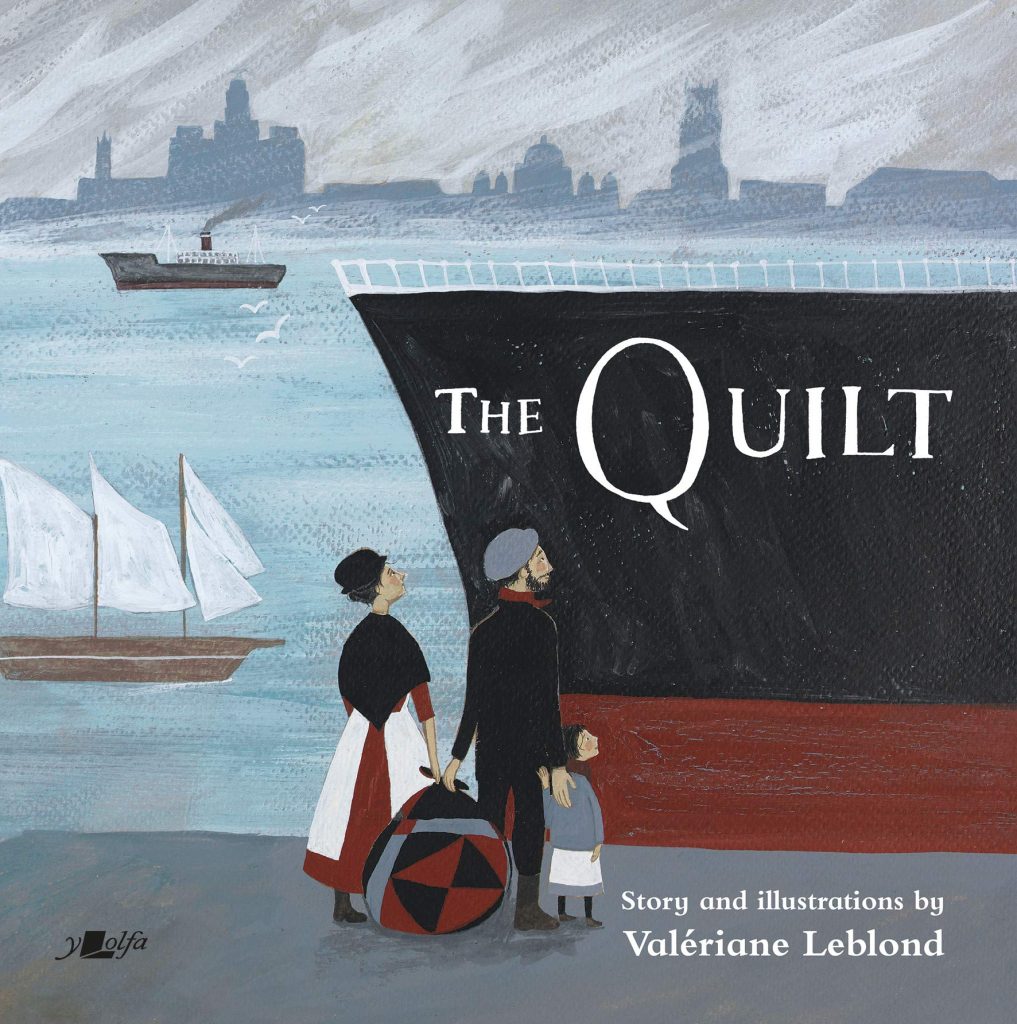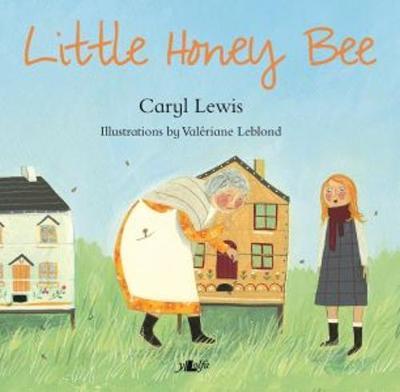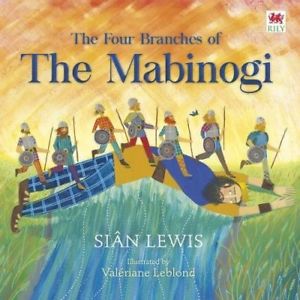My Name is River, the new novel from Emma Rea is published on Thursday 6th August by Firefly Press. Earlier this year, we hosted the cover reveal and Q and A with Emma – you can see that post by clicking here.
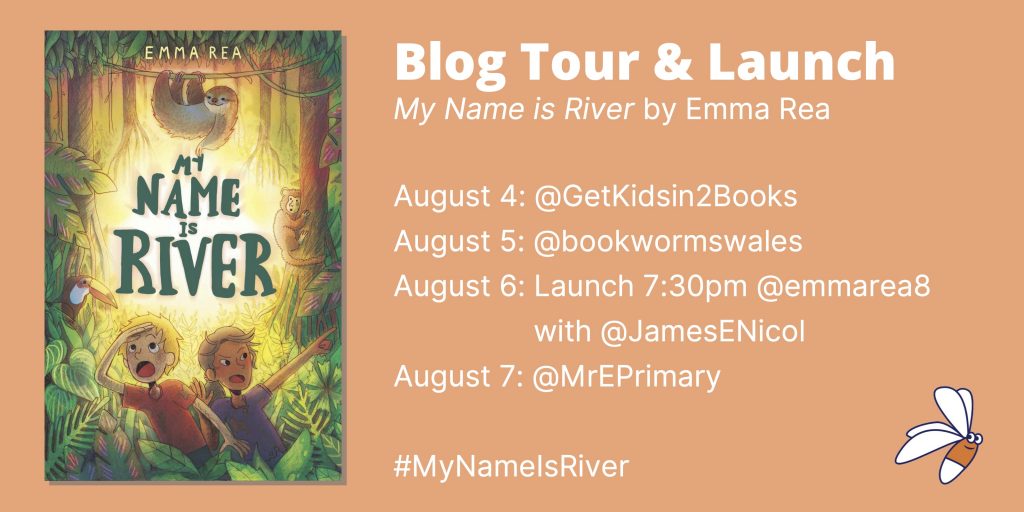
For the blog tour, we thought we’d ask Emma Rea for her favourite journey books seeing as main character Dylan journeys from Machynlleth to Brazil in this brilliant adventure. But first of all, let’s take a look at the story…
In My Name is River, 11 year old Dylan takes matters into his own hands when a pharmaceutical company plans to buy the family farm in Machynlleth. Dylan senses unfairness, injustice and there is more than a whiff of foul play so he sets off to the company headquarters in Brazil intent on uncovering the scandal.
This is a true adventure, probably unlike anything else you’re likely to read this year – My Name Is River is a dynamic ecological thriller with thought-provoking real world messaging. That may sound earnest – I promise it’s not – there’s plenty of action and adventure bursting through its pages, from speed boat chases to kidnappings and piles of peril in the Amazonian rainforest. This is James Bond with a conscience for 10 year olds.
What really makes the story though is the characters. Emma Rea kept Dylan from a previous book (Top Dog, published by Gwasg Gomer) and he’s likeable, determined and principled. However, it’s fair to say that the Brazilian characters steal the show. Lucia is a street child; a bold, resourceful and gutsy girl who has fought and found her own way. She is written with great warmth and humour by Emma who clearly has a soft spot for her. The relationship with Dylan is honest, caring, respectful and loyal – readers will love this demonstration of friendship.
If you’re looking for exciting and compelling entertainment it’s here in spades in this accomplished and thrilling novel.
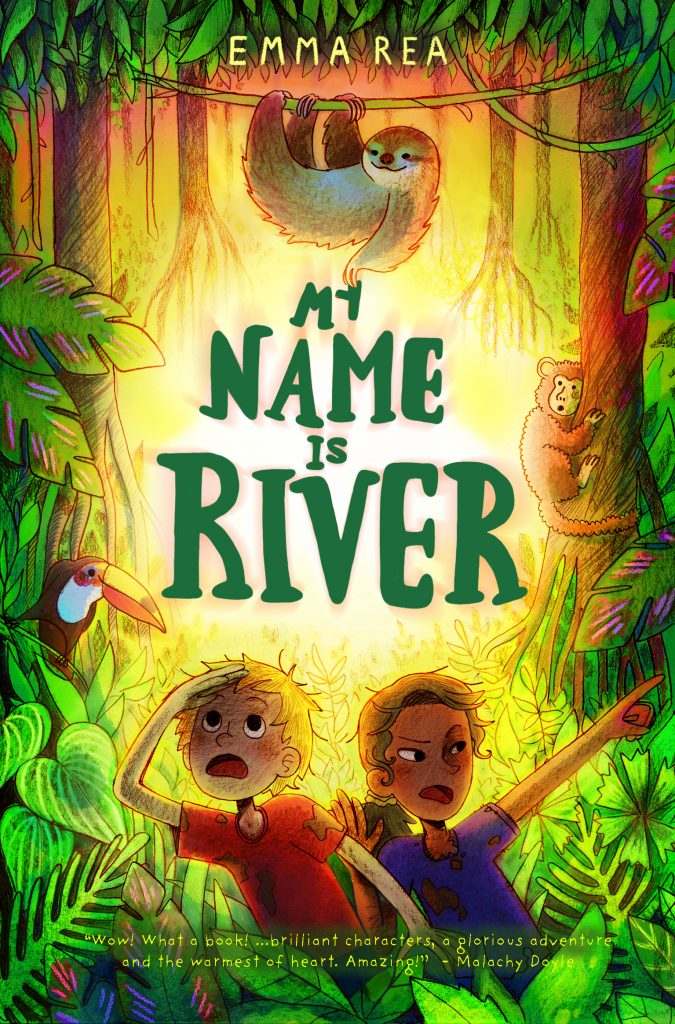
Emma’s Favourite Journey Books
In My Name Is River, Dylan embarks on an incredible journey. We asked Emma to tell us about her choice of books that all contain journeys…

I absolutely love Kensuke’s Kingdom by Michael Morpurgo, not only for the family voyage across the world’s seas, nor just for Michael’s long stop on an island before he can continue his journey home, but for the way Michael and Kensuke make friends very slowly, fall out badly, and manage to restore their faith in each other. I defy anyone to finish this book without needing six handkerchiefs.
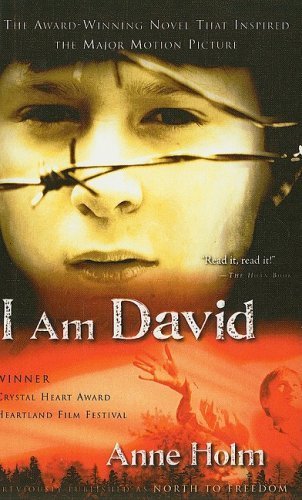
I Am David by Anne Holm is unbeatable. Twelve-year-old David escapes from a concentration camp and travels alone across Europe, armed with nothing but a compass and a bar of soap. Crackling with tension and dotted with small kindnesses, this is a book with an emotional punch you never forget. More handkerchiefs needed.
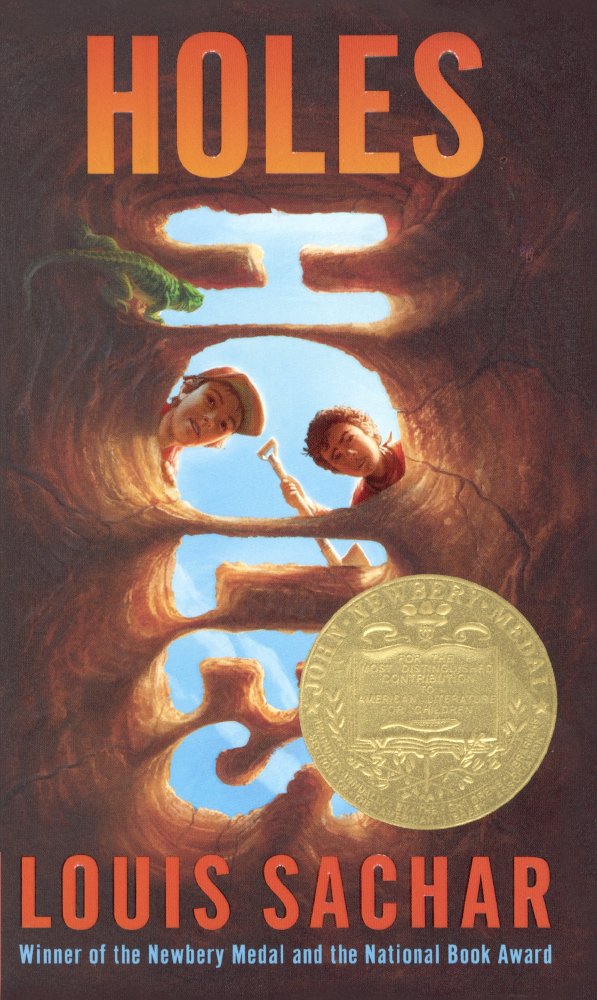
Holes by Louis Sachar is full of eventful journeys: from Latvia to the US, all over Texas, across the desert and up to the top of a mountain that resembles ‘God’s Thumb’. The plot reaches back four generations, encompasses powerful themes, and is leavened with mystery, humour and several endearing nicknames: Armpit, Zero, Squid and Barf Bag to name a few.
What are your favourite journey books? Get involved and let us know in the conversation on Twitter.
You can buy My Name Is River by Emma Rea on the Firefly website or from your local independent bookshop. Follow Emma on Twitter, or visit her website.
Thank you to Fireflies Leonie and Megan for supporting us with materials and a proof copy of My Name Is River, given in exchange for the review. Lastly, thanks to Emma for her engagement and for writing such a brilliant book!
